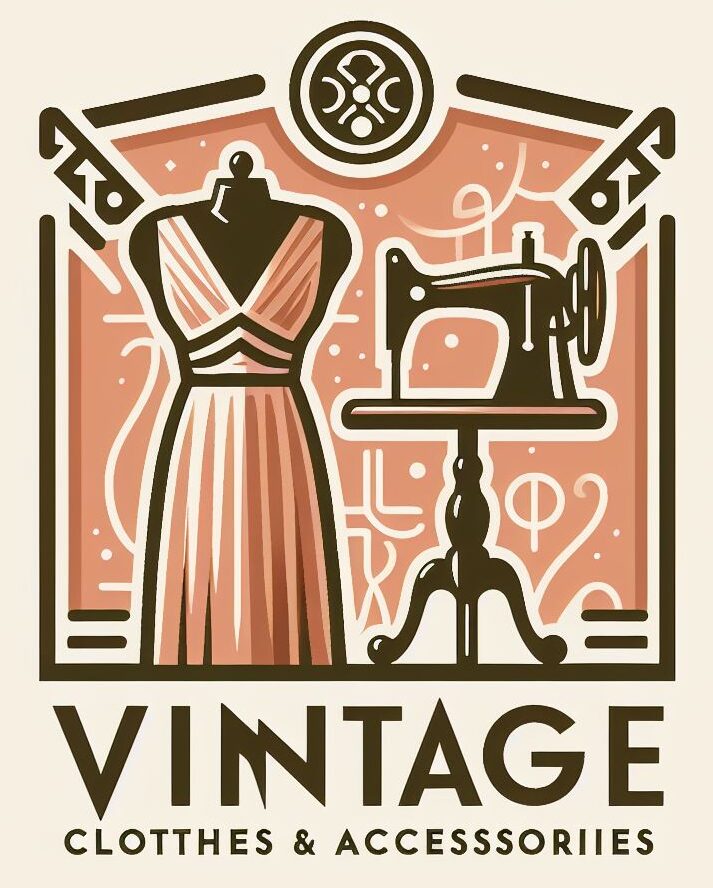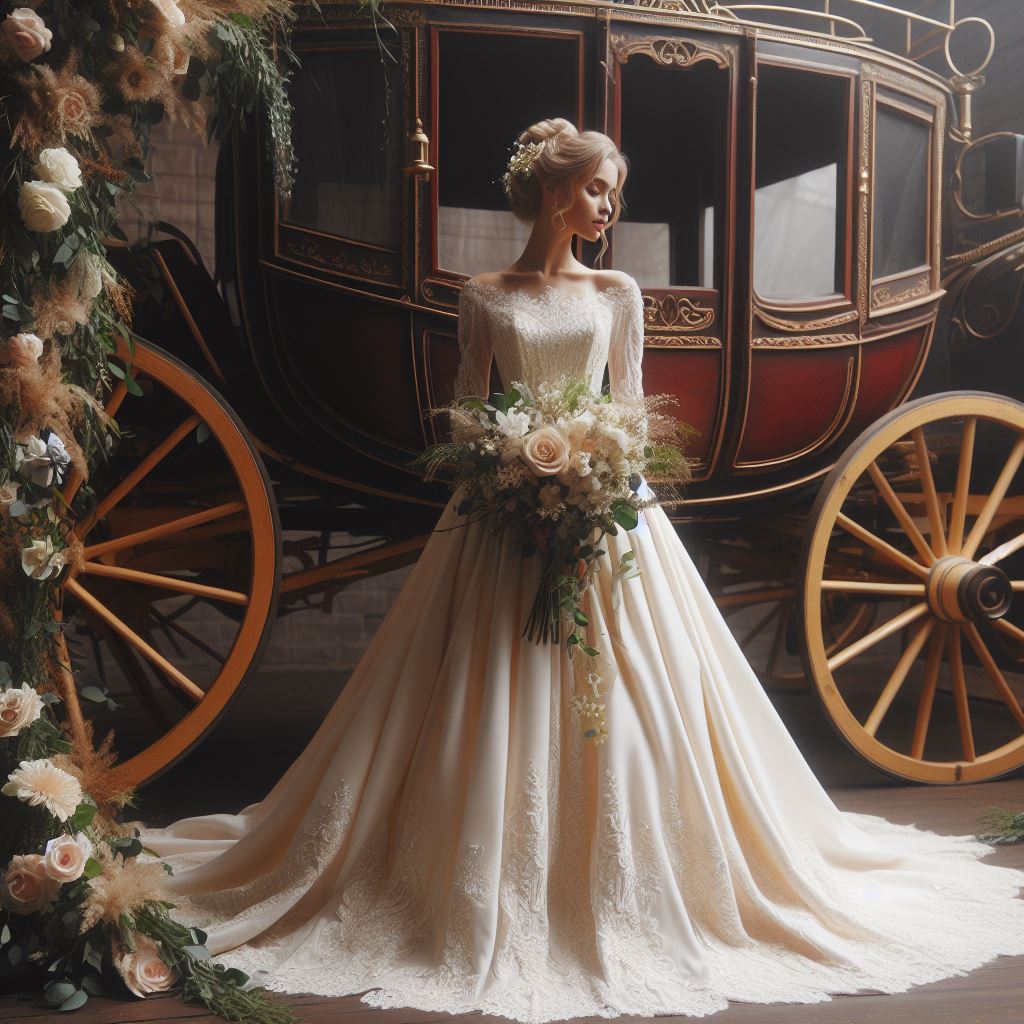
Embracing Elegance: How to Achieve a Vintage Look for Your Wedding
Introduction to vintage bridal: Exploring the charm and allure of vintage themes.
Vintage bridal styles are a timeless aesthetic – that captivates charm, elegance, and nostalgic appeal. Rooted in fashion from past eras, it brings a sense of romance and history to modern weddings – offering a distinctive alternative to contemporary bridal trends. Whether you’re drawn to the glamour of the 1920’s like me, or prefer the soft femininity of the 1950’s, or perhaps the bohemian vibes of the 1970’s, indeed vintage bridal fashion has something to offer every bride.
The Allure of Vintage Bridal
Timeless Elegance
Vintage bridal gowns often emphasize timeless silhouettes and intricate details. Lace, silk, chiffon, and satin dominate these styles – evoking an aura of grace and sophistication. Whether it’s a form-fitting gown from the 1930’s or a voluminous tea-length dress from the 1950’s, vintage pieces never go out of style.
Intricate Detailing
Unlike many modern designs, vintage bridal dresses are renowned for their craftsmanship. Exquisite lacework, embroidery, beading, or hand-sewn embellishments – add depth and uniqueness to each dress. Such details have been inspired by art movements or cultural trends of their time – making each era distinctive in bridal fashion.
Romantic Nostalgia
For brides who love the idea of bringing a piece of history into their wedding – a vintage style encapsulates that longing for the past. Wearing a gown inspired by an earlier era creates an emotional connection to traditions and the brides who came before. It’s a way to weave family history and classic beauty into the wedding day.
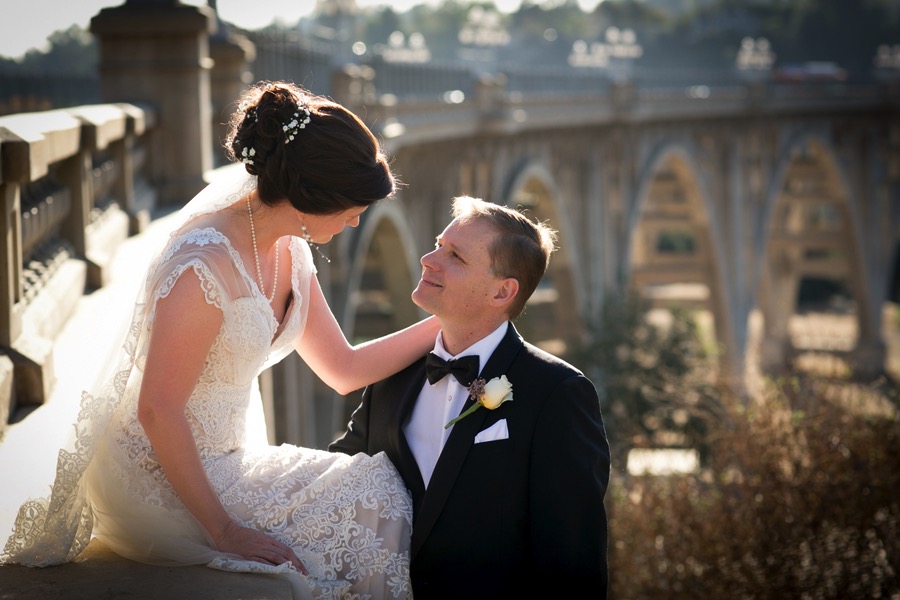
Iconic Vintage Eras in Bridal Fashion
1920’s – The Gatsby Glamour
Brides who love the opulence of the Roaring Twenties can embrace the flapper-inspired bridal look. Think drop-waist dresses, Art Deco embellishments, and plenty of fringe and beading. Headpieces like feathered headbands or juliet cap veils complete the look, inspired by the era’s fascination with luxury and jazz-age style. If you’re searching through Etsy, look through these designs to find an Art Deco wedding dress today. Amazon have some interesting white/silver gatsby dresses, inspired by the roaring 20’s here.
1950’s – The Tea-Length Romance
The 1950’s bridal style is marked by its sweet and feminine charm. Full skirts with crinolines, tea-length hemlines, and sweetheart necklines dominate this era. Brides may channel a vintage Hollywood starlet with these classic silhouettes, which are often paired with short gloves, pearls, and birdcage veils. Tea length wedding dresses could be sourced through Etsy – have a look in this link. Zapaka have some cute vintage inspired tea length dress – learn more here.
1970’s – The Boho Bride
The 1970’s brought a laid-back, ethereal vibe to bridal fashion. Flowing gowns, bell sleeves, floral crowns, and natural makeup capture the essence of the bohemian bride. This era is perfect for outdoor or rustic weddings, combining earthy tones, natural fibers such as crochet knit – with a free-spirited aesthetic. Plenty of Boho wedding styles here at Etsy – look at these gorgeous designs. Some beautiful styles here at Zapaka also, have a look.
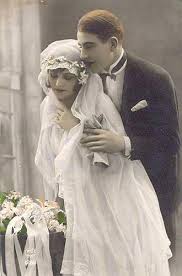
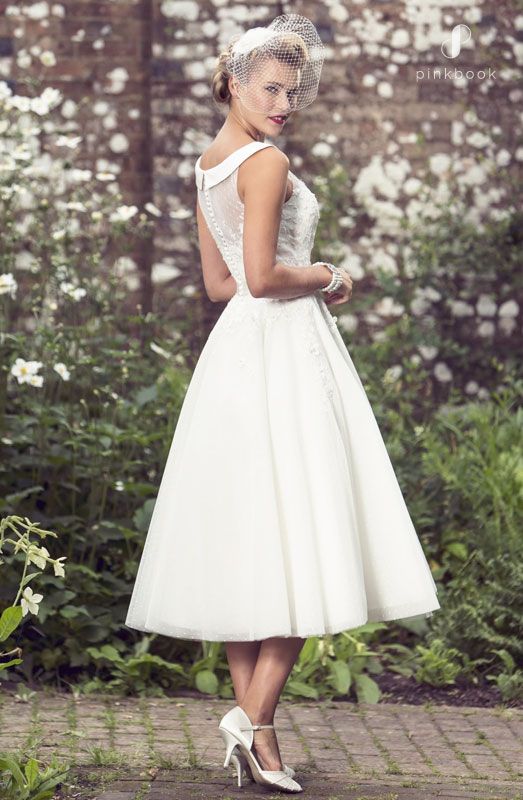
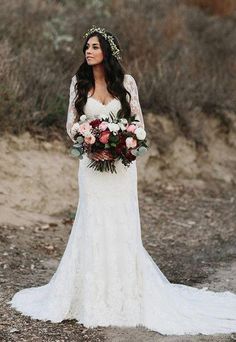
Accessories: The Perfect Finish
To truly capture the essence of vintage bridal style, the right accessories are key to complete the full ensemble
- Veils: From cathedral-length veils of the Edwardian era to the birdcage veils of the 1950’s, these accessories add timeless elegance. Beautiful cathedral veils are found today through Etsy – buy them here.
- Headpieces: Delicate hair combs, tiaras, or floral crowns (depending on the era) lend the perfect vintage touch. Vintage headpieces and combs located online – look no further than this gorgeous selection.
- Jewelry: Vintage-inspired jewelry, like pearl necklaces, antique brooches, or drop art deco earrings, can make a bridal look feel authentically vintage. Pearls and other vintage pieces bought at this store – learn more today.
- Shoes: From cuban heel courts or T strap shoes of the 1920’s – to peep-toe heels for a 1940’s look, and strappy sandals for a 1970’s vibe – footwear plays an essential role in completing the look. Gorgeous authentic vintage shoes can be found here – scroll through the styles available. For more modern inspirations – look at these from Amazon today.
Why Brides Love Vintage Themes
Personal and Unique
Vintage bridal fashion is inherently unique. Brides can find or customize dresses that reflect their personality while honoring the elegance of the past. Vintage styles allow for creativity in both the gown and the overall wedding aesthetic.
Sustainability
Many brides today choose vintage for sustainability reasons. Repurposing old gowns or sourcing vintage pieces supports a more eco-friendly approach to bridal fashion, thus reducing waste and offering an opportunity to wear something truly meaningful.
A Connection to the Past
For some, wearing a vintage bridal gown or vintage accessory offers a deeper connection to family traditions, such as wearing a mother’s or grandmother’s dress, or simply invoking a time of romance and refinement that modern designs may not fully capture.
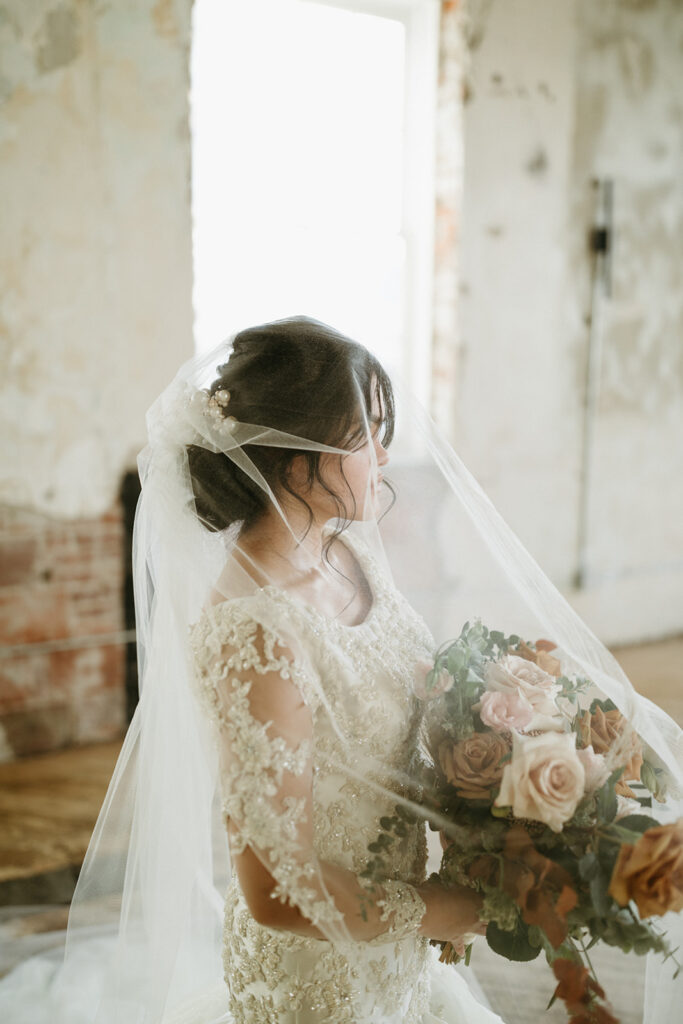
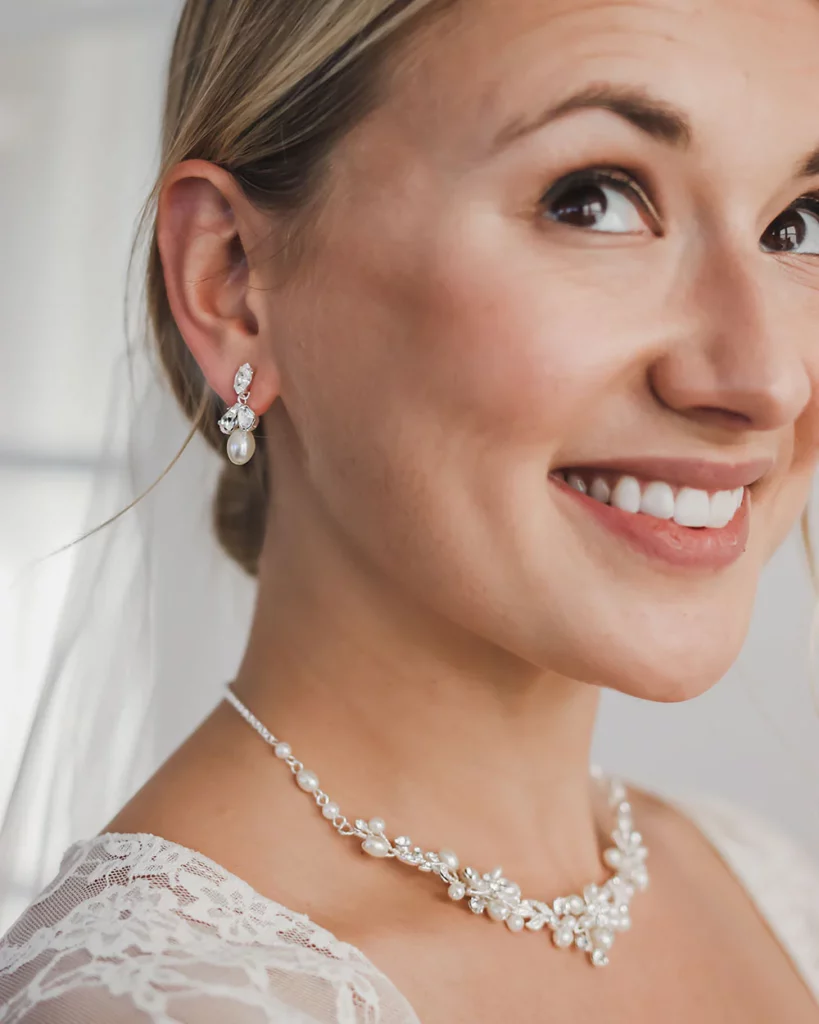
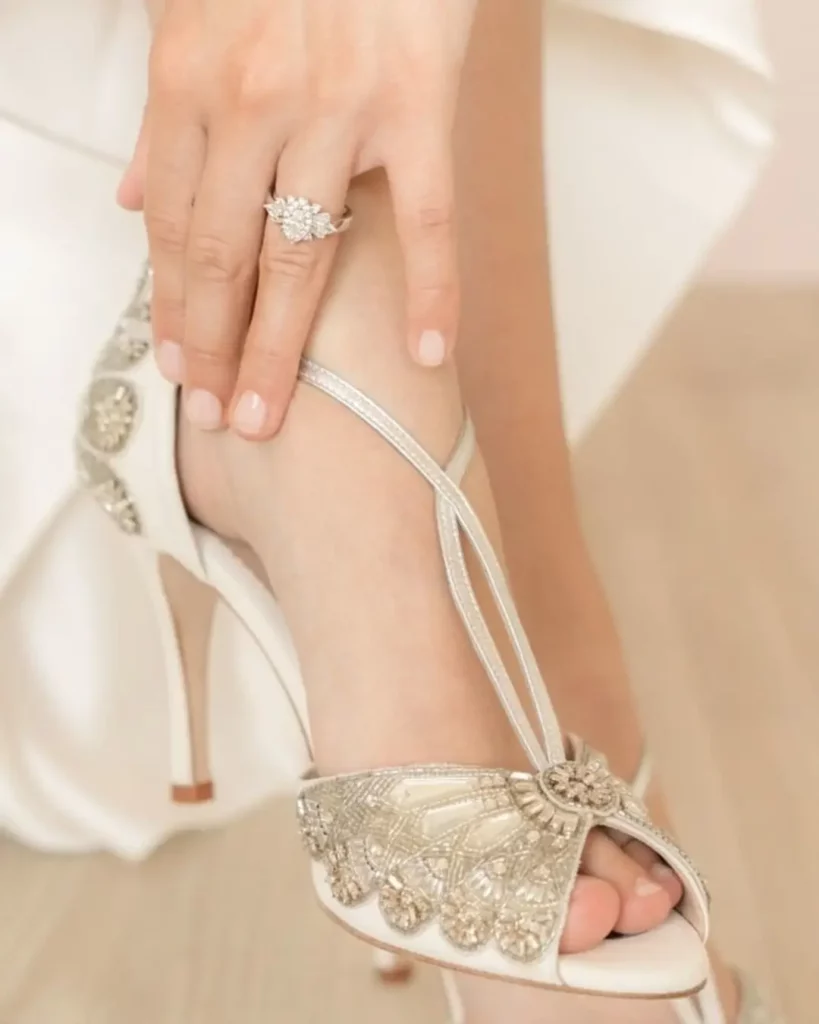
The Perfect Vintage Wedding
A vintage bridal gown is just the beginning. The vintage theme can extend to every element of the wedding—from invitations and decor to music and entertainment. Opt for antique furnishings, vintage cars, or retro-inspired stationery to set the tone. Soft lighting, nostalgic music, table wear and timeless floral arrangements – help create an atmosphere that transports guests back to a romantic and elegant past.
In conclusion, the charm and allure of a vintage bridal style – lie in its ability to transcend time. It offers a bride the opportunity to walk down the aisle in a gown that tells a story, rich in history and emotion. Whether you’re looking for a full-on vintage wedding or subtle nods to the past, the vintage bridal aesthetic is a celebration of love, elegance, and tradition.
Understanding vintage fashion eras: A look at popular fashion periods such as the 1920’s, 1950’s, and 1980’s and their distinct characteristics.
Vintage fashion is marked by distinct characteristics that reflect the cultural, social, and economic trends of their time. Let’s break down the key elements of fashion from the 1920’s, 1950’s, and 1980’s – three iconic periods that had a major impact and influence on style:
1920’s: The Jazz Age and Flapper Style
The 1920’s were defined by a shift toward modernity, liberation, and a break from the conservative dress codes of the Victorian era. A sense of freedom – especially amongst women was experienced and welcomed.
Silhouettes: The defining look was the flapper dress . This style featured a straight, loose silhouette that de-emphasized the waistline and celebrated more boyish, androgynous figures. Dresses typically fell just below the knee – a scandalous departure from previous full-length gowns.
Fabrics and Embellishments: Lightweight fabrics like silk and chiffon were popular, often adorned with fringe, beads, and sequins for a sense of movement (perfect for jazz dancing). Dresses now had drop waists and were paired with cloche hats or skull caps. Assorted lace and fabrics are sourced at Etsy online, buy them today.
Accessories: Long strands of pearls, feather headbands, T-strap shoes, and small clutch purses were common. Most women wore their hair in short bobbed hairstyles – emphasizing freedom and a change from Victorian restrictions. Inspired T-straps are available in classic or modern designs – find your perfect shoe here. Assorted wedding clutch purses can be bought now – learn about them here.
Menswear: Men adopted looser, high-waisted trousers, often paired with suspenders or vests. Suits became more relaxed, and bow ties or straight ties, along with fedoras – were signature looks. Scroll through the many varieties of vintage inspired men’s suits today – find your dapper style here. Other authentic styles including tuxedos are found at Etsy – get yours today. Men’s accessories are inspired today through these examples here – find your perfect additions today.
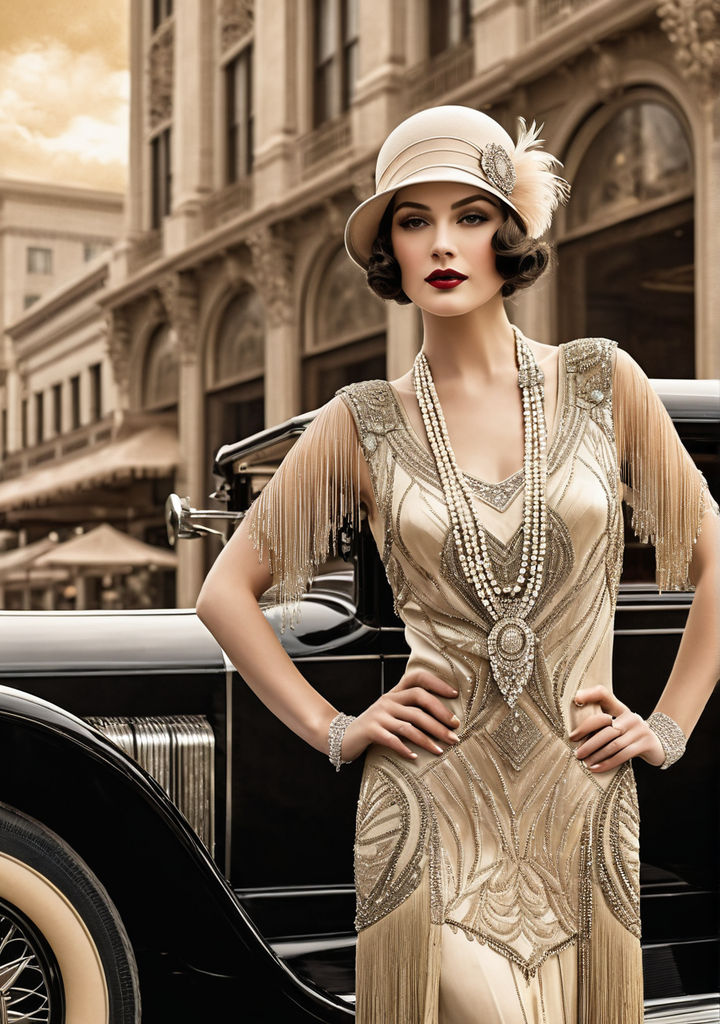
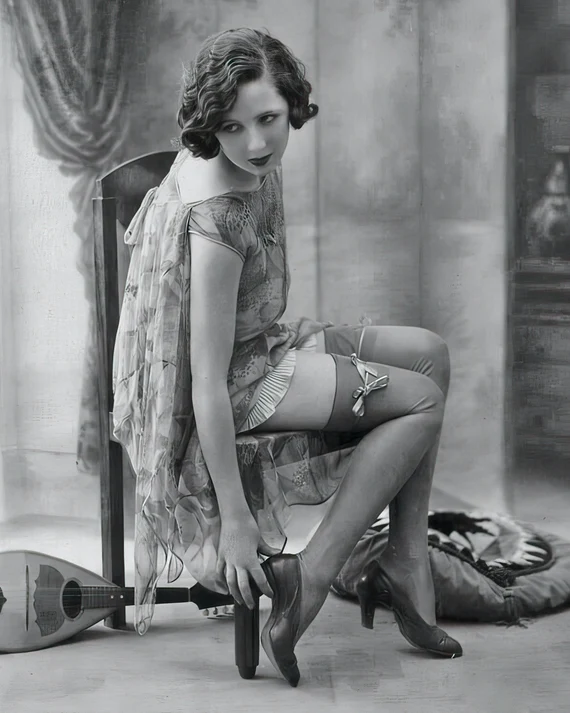
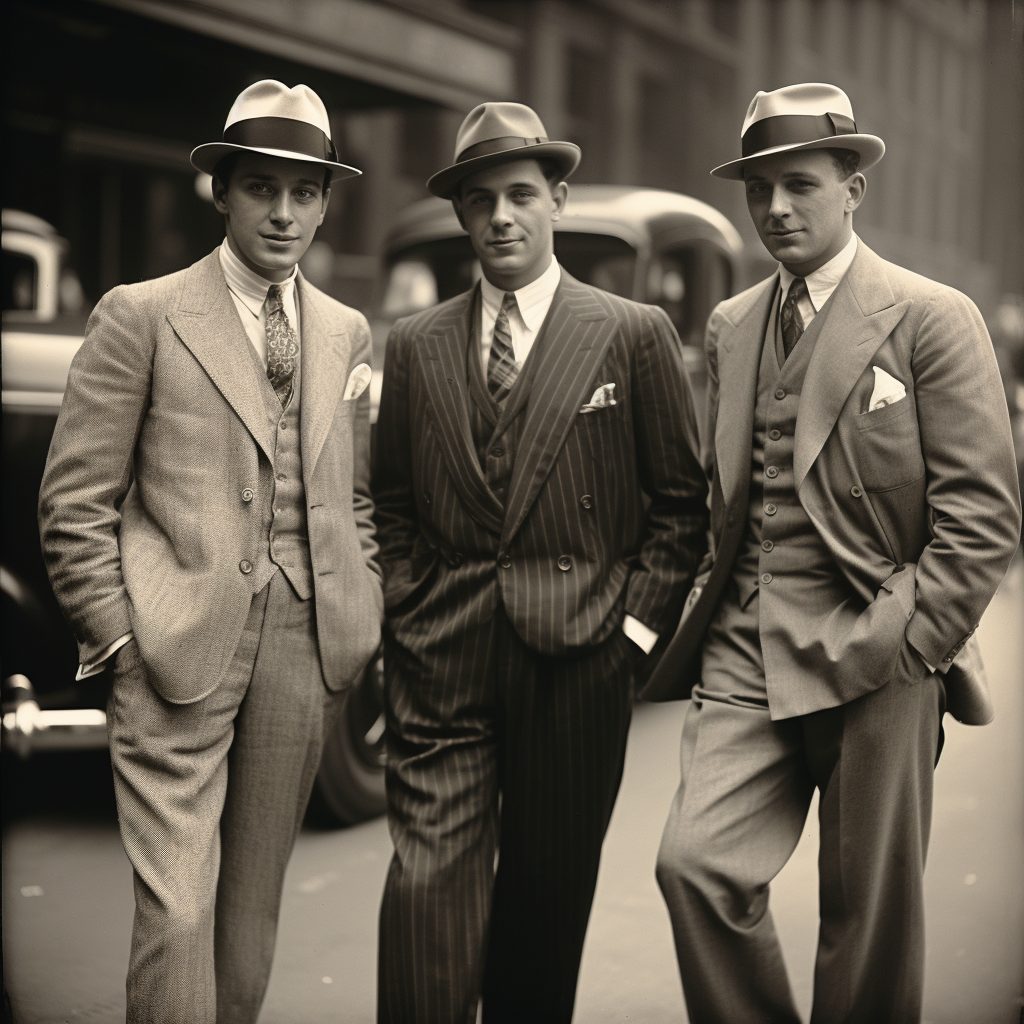
1950’s: The Post-War Elegance and Rock ‘n’ Roll Influence
The 1950’s saw a return to more traditional, structured, and feminine designs – with a focus on creating an idealized hourglass figure. The era’s fashion was a direct response to the utilitarian styles of the war years – celebrating prosperity and consumerism.
Silhouettes: Full skirts that flared out from the waist, epitomized by Christian Dior’s New Look, became iconic. Nipped-in waists were often exaggerated with petticoats, while more fitted styles like pencil skirts were also popular. Dresses that had fitted bodices and wide, circular skirts or sheath dresses that hugged their figures. Few new look dresses are still available – sort them here if you can online, or buy a pattern and make your own? Some classic pencil skirts located at Etsy today – cute styles available for you.
Fabrics and Patterns: Cotton, silk, organza and tulle were widely used, with pastel colors and floral prints being highly popular for day wear. Evening wear embraced bold colors like red, black, and white. Polka dots, gingham, and bold stripes were classic patterns. Wedding dresses were satin and lace, and came in ivory, pink or yellow – so they could be worn again to a dance perhaps. Beautiful formal fabrics are bought online at Etsy, find your perfect wedding fabric and get vintage inspirations made for your day.
Accessories: Gloves, pearls, cat-eye sunglasses, and hats were staple accessories for women. Shoes included kitten heels, and handbags were small and structured. Pill box style fascinators were worn by brides – with a veil covering the face. Gloves and wedding hats are still very popular, find them here today. Fascinators, hats and wedding gloves sold through Amazon for that touch of vintage inspiration.
Menswear: For men, the classic gray flannel suit was a wardrobe essential. Slim-cut trousers and jackets were popular, often paired with ties in playful colors or patterns. Casual wear included Hawaiian shirts, leather jackets, and denim, reflecting the rise of youth culture and the rock ‘n’ roll influence. Tuxedos in black or midnight blue were popular wedding attire. Tuxedo formal suits can be bought here online.
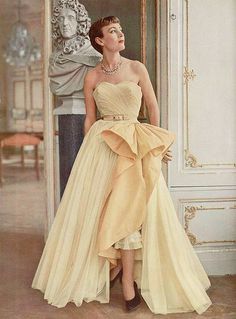
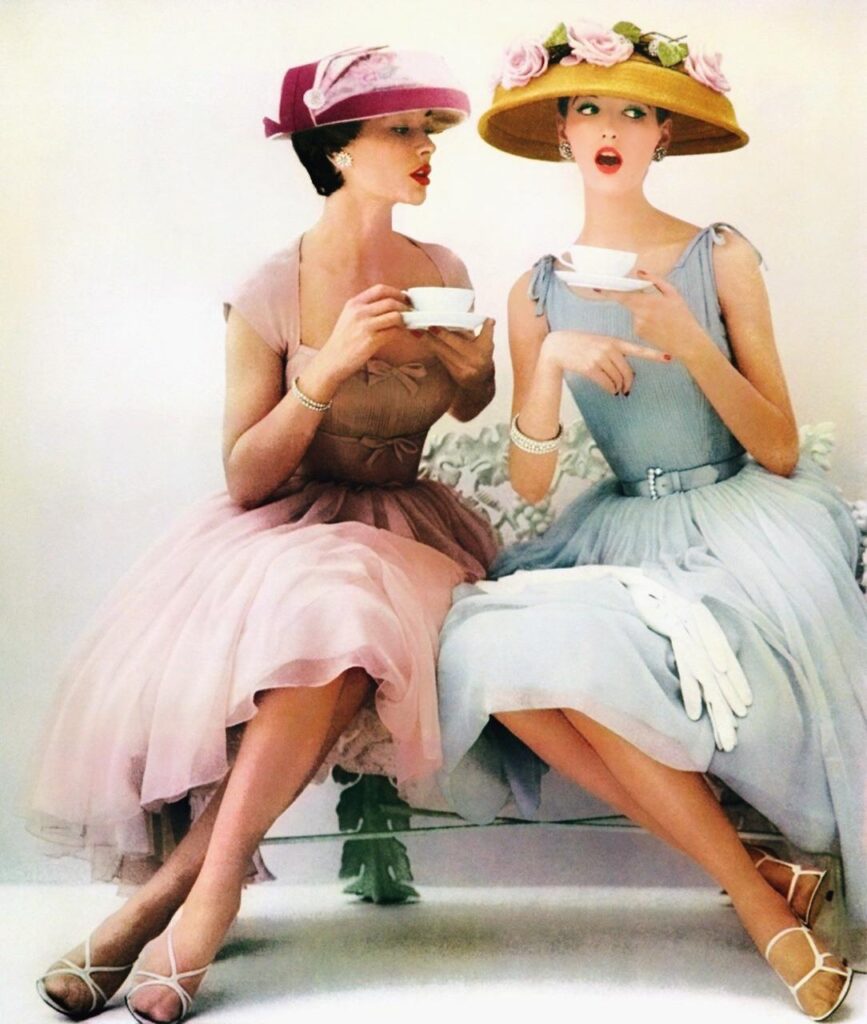
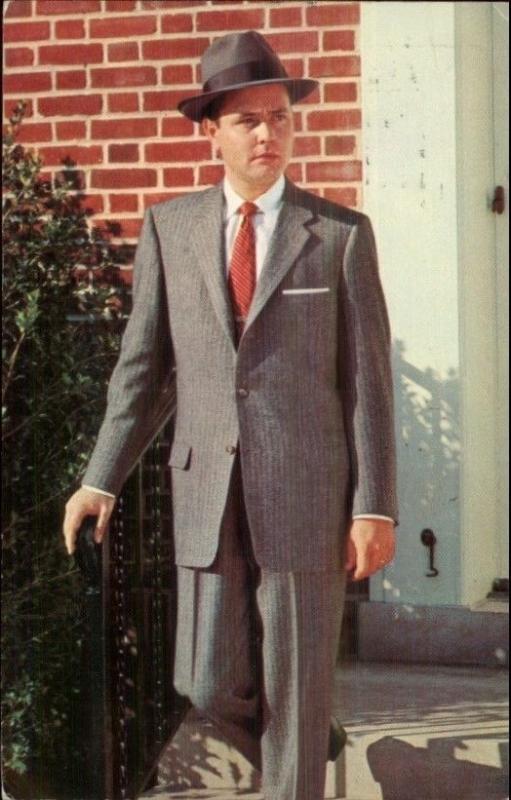
1980’s: Power Dressing and Neon Vibes
The 1980’s were a time of excess and boldness, with fashion reflecting both the rise of corporate culture, and the vibrant subcultures of the time.
Silhouettes: Oversized, dramatic silhouettes defined the decade. For women, power dressing emerged as a symbol of workplace empowerment, with broad-shouldered blazers, sharp lines, and tailored suits being key elements. On the casual front, oversized sweaters, leggings, and off-the-shoulder tops were prevalent. Formally bridal gowns consisted of puff sleeves, ruching and lace in taffeta or satin, with or without an added train. A few 80’s dresses still exist, or you may consider making one yourself with the patterns available here.
Fabrics and Colors: Bold, bright colors—especially neon—dominated, as did metallic fabrics, sequins, and synthetic materials like Lycra and spandex. Animal prints, leather, and denim (often in acid-wash) were widespread, embracing both glamour and rebellion. After five wear was seen in satin charmeuse, taffeta and shantung, amongst other common fabrics. Learn about the popular bridal fabrics still available in taffeta and shantung here.
Accessories: Big hair, bold makeup (think bold blue eyeshadow and red lips), chunky jewelry, and statement belts or soft fabric bow belts were common. Women’s shoes ranged from stilettos to chunky sneakers. Fingerless gloves and large plastic bangles also made an appearance. I have located some bridal belt accessories here – have a look at these.
Menswear: For men, the Miami Vice look (pastel-colored suits paired with t-shirts), leather jackets, and sportswear (track suits and athletic shoes) were on-trend. The preppy look, featuring polo shirts and sweaters tied around the shoulders, was another notable style. Wedding suits consisted of 3 pieces with a bow tie and grandpa collar in either white, black or brown. Cumberbunds were a popular addition to formal wear. Amazon stock men’s suit cumberbunds – learn more about them here, today.
Each of these fashion periods reflects broader shifts in society and culture, with the 1920’s focusing on liberation, the 1950’s celebrating femininity and structure, and the 1980’s embracing excess and self-expression.
As an affiliate - I may receive a commission when you click on a link and purchase through this site.
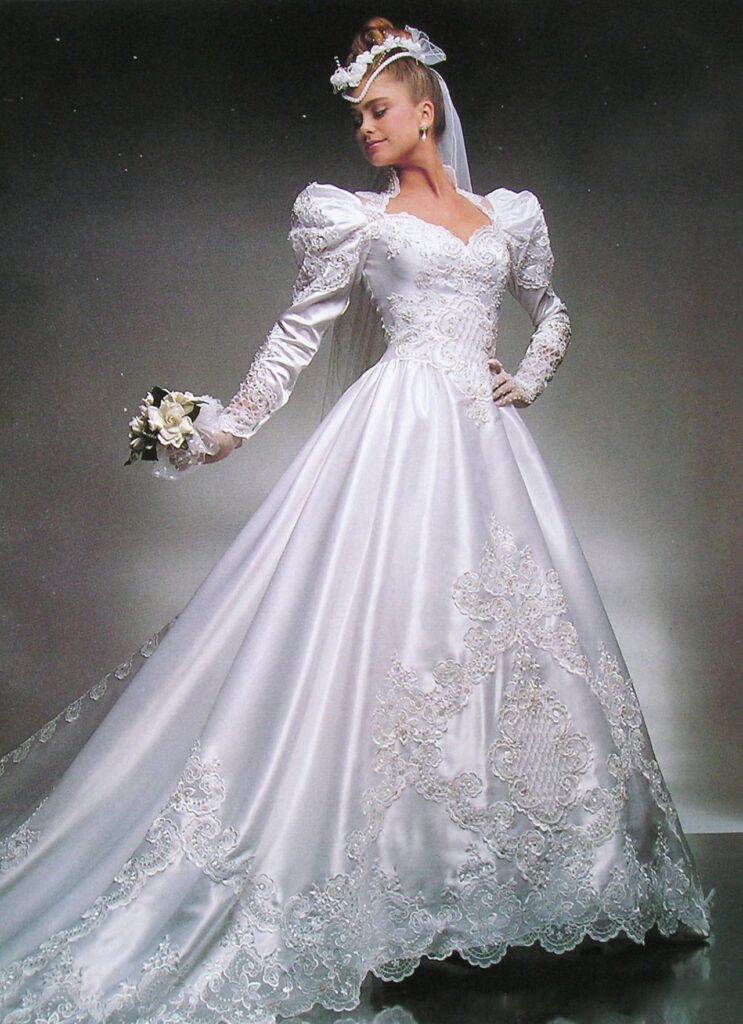
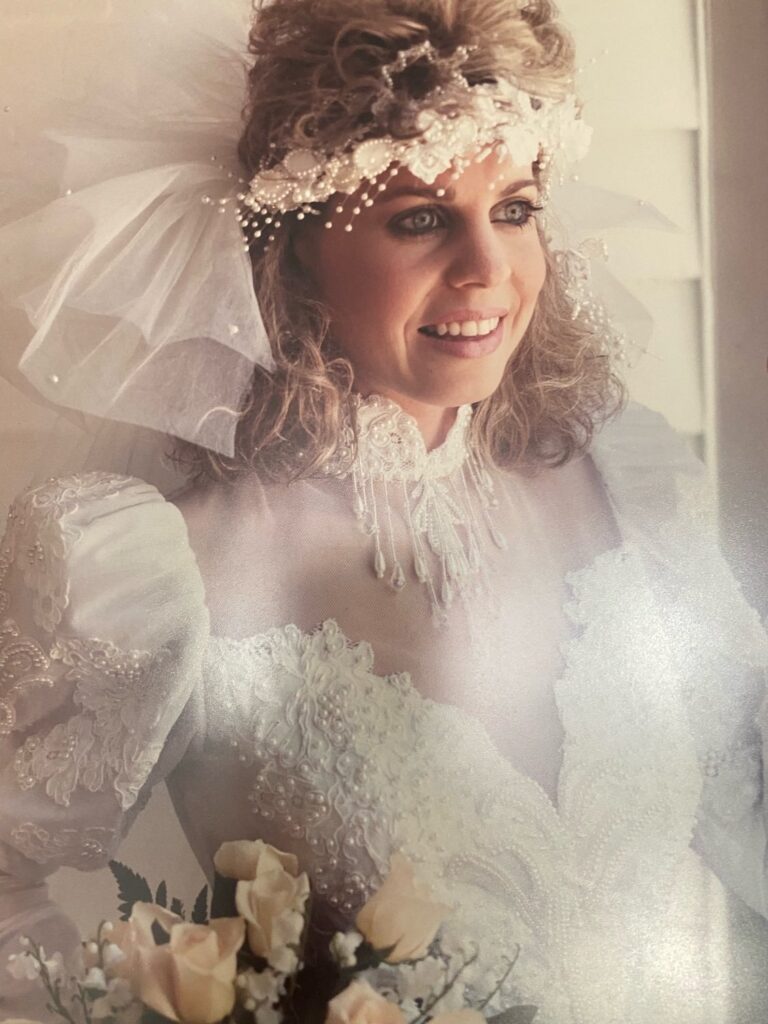
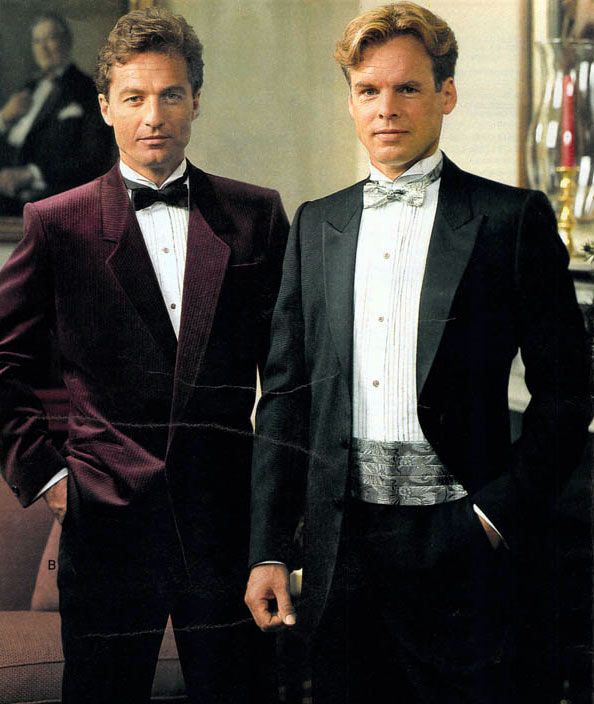
Key elements of vintage bridal attire: Discussing lace, pearls, and antique fabrics that define vintage wedding dresses.
Vintage bridal attire is steeped in elegance and timeless beauty, defined by key elements such as lace, pearls, and antique fabrics. Each of these components evokes a distinct era, making vintage wedding dresses unique and romantic. What key features are we talking about here – lets take a look.
Lace
Lace is a defining feature in many vintage wedding dresses – ranging from intricate handmade lace, synthetics from the 60’s-70’s and machine-made patterns. Some popular types include:
Chantilly lace: Known for its delicate, floral design, it was widely used in Edwardian and early 20th-century dresses. Get your chantilly lace here today.
Alençon lace: A type of needlepoint lace that originated in France, often associated with 1950’s gowns due to its bold, floral patterns and raised corded outlines. Buy your Alencon lace through Etsy’s vast variety today.
Guipure lace: Often called “Venetian lace,” it has a heavier, more textural feel – perfect for dresses from the 1960’s-70’s. Beautiful Giupure lace is also found through Etsy online.
Lace can be used in full dresses, veils, or intricate accents along sleeves and necklines as well as in the back parts of some of these dresses.
Pearls
Pearls add a touch of opulence and grace to vintage bridal attire. They were particularly popular during the mid-20th century, and were used for:
- Beading on dresses: Hand-sewn pearls may adorn bodices, hemlines, or even headpieces – creating a classic look. For beautiful pearls in beading including already beaded varieties – look no further than these.
- Accessories: Pearl necklaces, earrings, or headpieces often complete a vintage bridal ensemble – contributing to a subtle, sophisticated appeal. Modern or vintage pearl variations that are reasonably priced, located here.
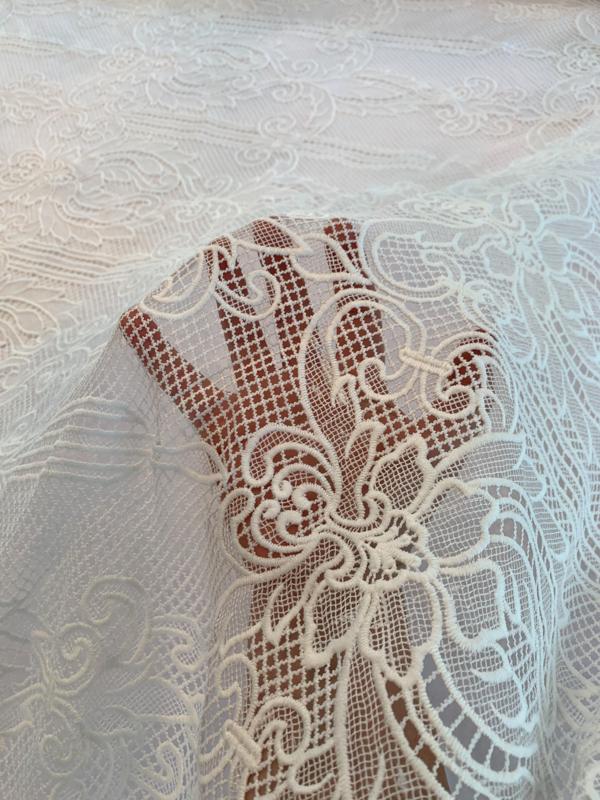
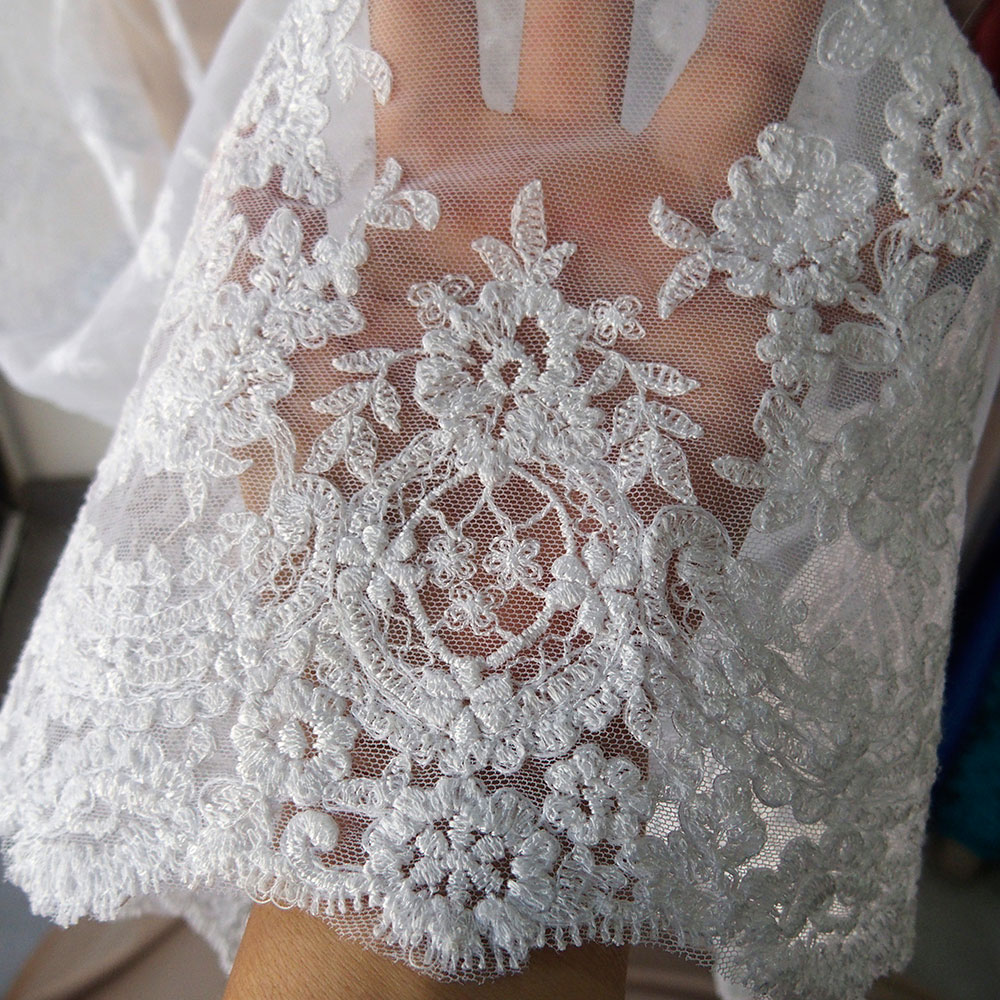
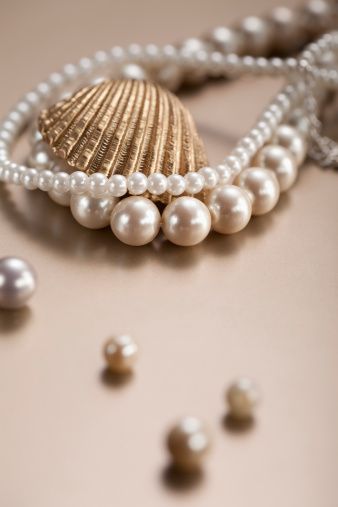
Pearls are timeless, and evoke a sense of royalty – particularly if you’re inspired by early 20th-century or 1940’s bridal looks.
Antique Fabrics
The fabric choice plays a crucial role in the overall aesthetic of a vintage wedding dress: Look through the links already mentioned in previous paragraphs to purchase.
- Silk: Favored for its luxurious feel and natural sheen, it was commonly used in wedding dresses from the 1920’s to the 1950’s. Fabrics like silk satin and silk chiffon lend an ethereal quality to a gown.
- Tulle: Popular in the 1950’s and 60’s, tulle skirts add a romantic and voluminous effect to wedding gowns. Organza was also popular alternative for after 5 gowns.
- Organdy: A crisp, sheer cotton fabric often seen in Victorian-inspired dresses, organdy offers a soft yet structured look that adds a vintage charm to the attire.
Silhouettes
Vintage wedding dresses often feature timeless silhouettes:
Tea-length gowns: A hallmark of 1950’s fashion – often paired with lace or pearl details and tulle underskirts.
Empire waist: This high-waisted silhouette, popularized in the Edwardian era and the 1960’s, complements vintage lace and chiffon fabric.
A-line and ball gowns: These classic vintage shapes – harken back to the regal wedding styles of the 1930’s and 40’s.
Veils and Headpieces
Cathedral veils: Often made of lace or sheer silk. These dramatic, floor-length veils were popular in the early 20th century.
Juliet cap veils: A 1920’s and 30’s favorite – the cap sits snugly on the head, paired with delicate lace or beading. Gorgeous Juliet veil caps are found at Etsy – buy your stunning cap here.
Vintage headbands or tiaras: Pearls, beads, and lace accents often adorn these elegant accessories, adding a timeless appeal or nod to their era. Found these stunning vintage tiaras and classic headbands for your perusal.
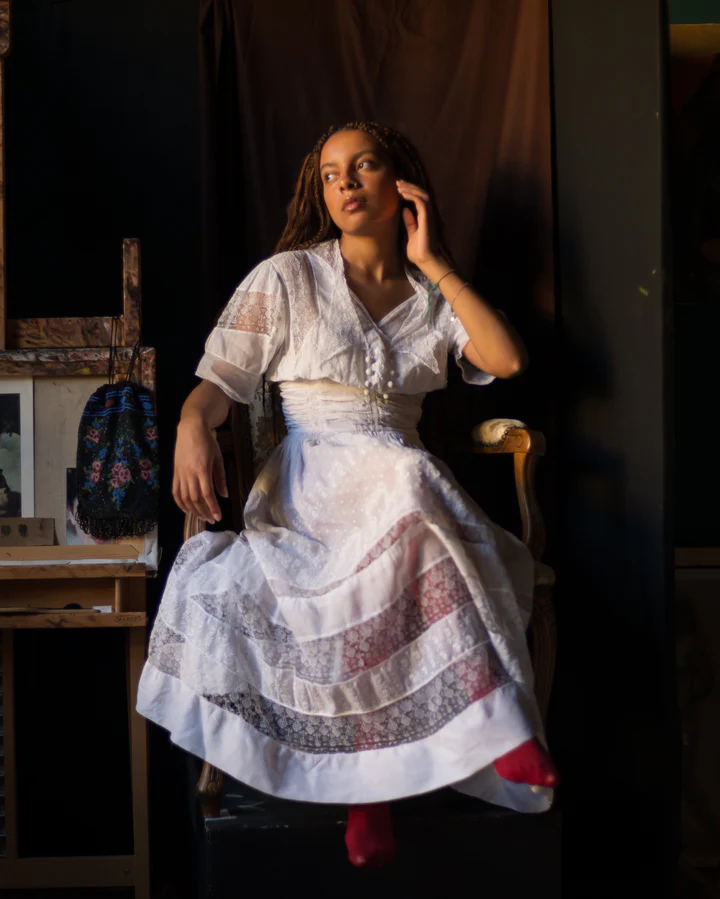
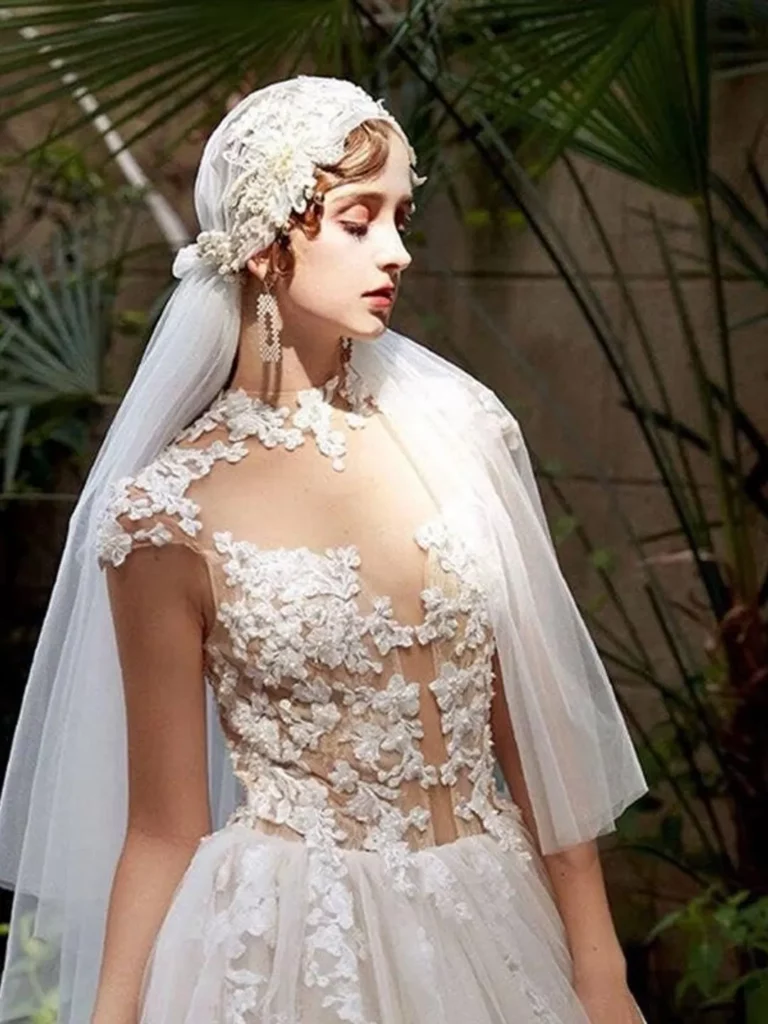
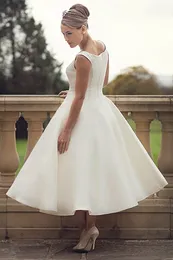
Color
While white is the standard for modern brides, vintage gowns have often explored various shades of:
- Ivory: A softer, more antique version of white.
- Champagne: Adds a subtle warm tone to the gown, like gold or beige – ideal for recreating looks from the 1930’s-40’s.
- Blush tones: Some vintage gowns from the Edwardian and Victorian eras feature pastel rosy undertones.
Each of these elements—lace, pearls, antique fabrics, and classic silhouettes—helps capture the essence of a bygone era – creating a timeless bridal look that can be adapted to a modern or traditional wedding setting.
Hair and makeup artistry: Tips on achieving iconic vintage hairdos and makeup looks for a bridal transformation.
For a stunning bridal transformation – here are some tips to achieve iconic vintage hairdos and makeup looks, that will perfectly capture the elegance of different eras:
Vintage Hairdos
1920’s: Finger Waves or Bob Style
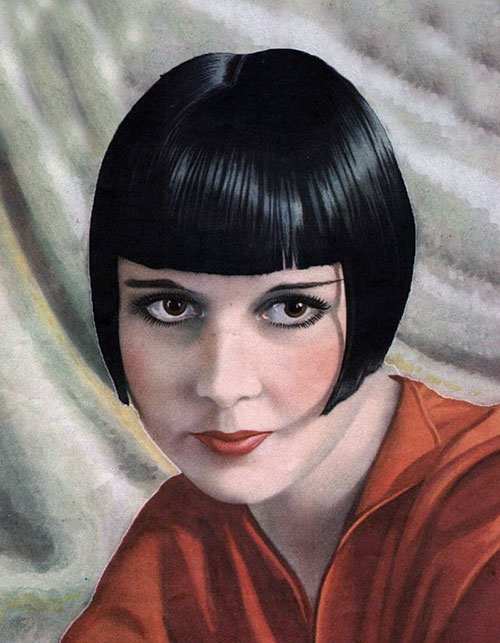
Hairdo: Opt for the classic flapper look with sleek finger waves. If you have short hair – a bob style cut or faux bob works well.
Styling Tip: Use a small curling iron or pin curls to form “S” shapes. Pin and set with a strong-hold gel and hairspray – for a glossy, sleek finish.
1940’s: Victory Rolls
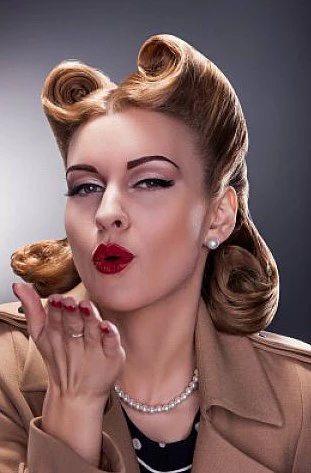
Hairdo: Victory rolls are glamorous and full of volume. Create two large rolls on the top or side of your head, and leave the rest to fall in soft curls or waves.
Styling Tip: Tease the hair for volume and use bobby pins to secure the rolls. Finish with hairspray to maintain the shape.
1950’s: Hollywood Glamour Waves
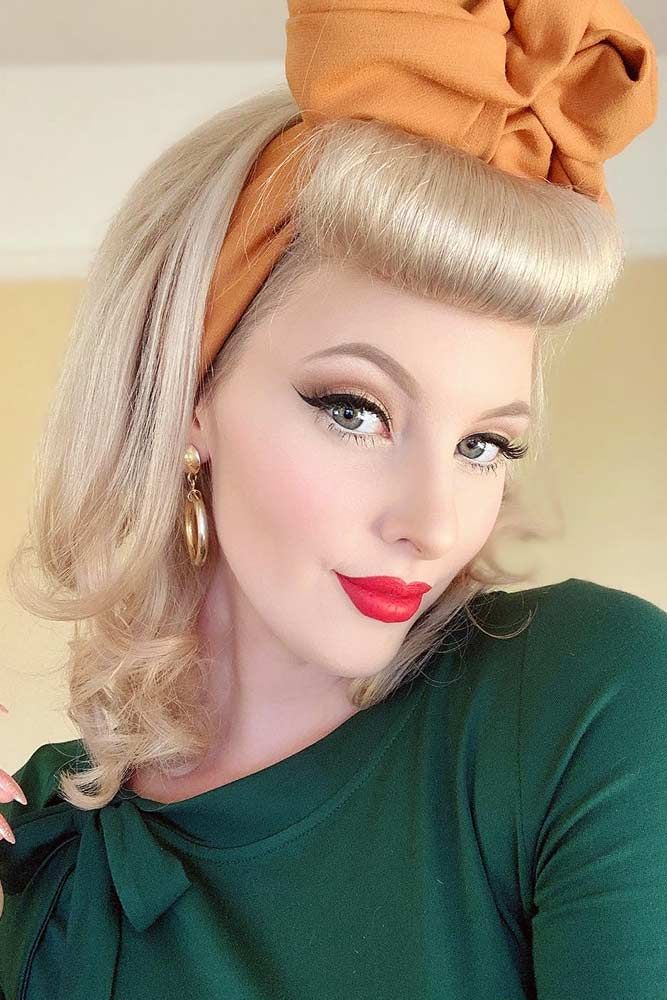
Hairdo: Channel old Hollywood glamour – with structured, polished waves.
Styling Tip: Use a large-barrel curling iron, then brush out the curls for soft waves. Finish with a side part and a shine spray.
1960’s: Beehive
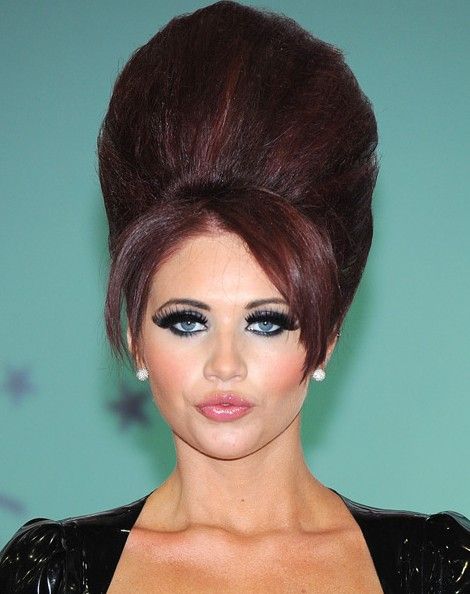
Hairdo: This era is known for its voluminous updos – especially the iconic beehive.
Styling Tip: Tease the crown of your hair to achieve height, then pin the rest into a high updo. Secure with hairspray for a long-lasting hold. This is best achieved with long hair of similar length
1970’s: Loose Waves and Braids
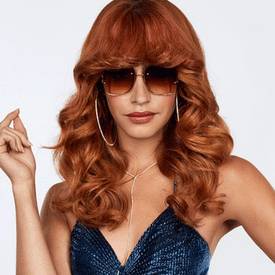
Hairdo: For a more bohemian look, embrace loose waves or pull long hair into a high bun with a crown braid from existing hair length.
Styling Tip: Use a curling iron, crimper or hot rollers for natural waves, or add small, delicate plaited braids – for a soft, romantic touch.
Vintage Makeup Looks
1920’s: Bold Lips and Smoky Eyes

Eyes: Apply a dark, sultry shadow on the eyelid, blending upwards. Smudge a dark kohl eyeliner along the lash line.
Lips: Opt for deep red or plum lipstick with a heart-shaped lip tip effect.
Brows: Thin and rounded, lightly filled in. Don’t over pluck brows to achieve this – I found in time that brows do not grow back – in mature age.
1940’s: Classic Red Lips and Winged Liner
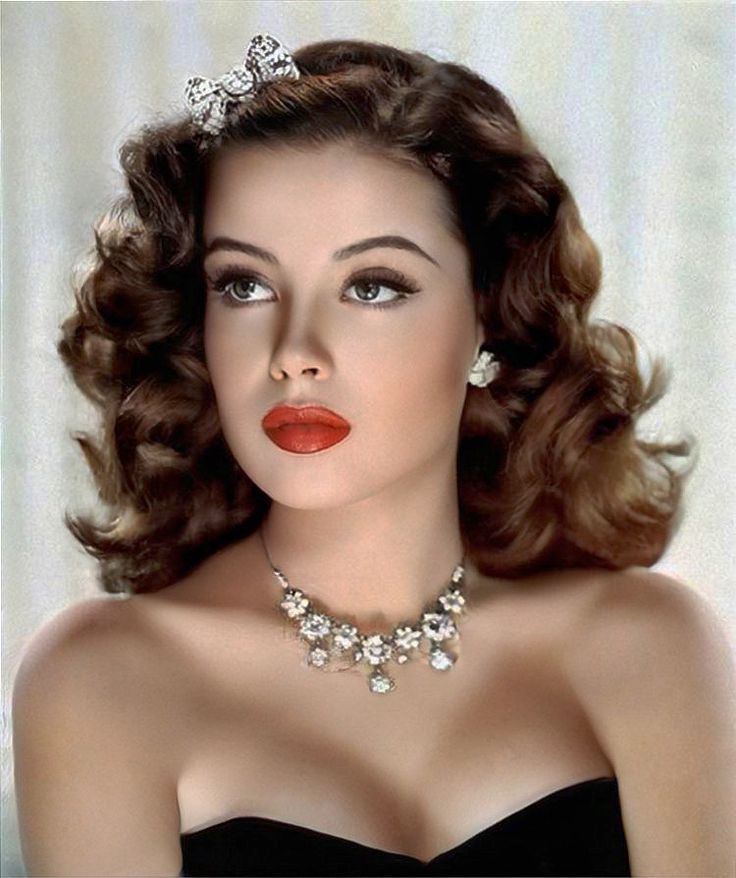
Eyes: Go for a simple winged eyeliner with neutral or slightly shimmery eyeshadow.
Lips: A bold red lip is essential, with a matte finish. Very chic and 40’s style.
Brows: Arched, defined brows that enhance the eyes.
1950’s: Cat Eye and Rosy Glow
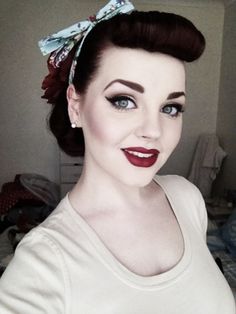
Eyes: A dramatic cat eye paired with light pastel shadow (like champagne or soft pink).
Lips: Classic red or pink lips, with a defined Cupid’s bow.
Cheeks: Soft pink blush on the apples of the cheeks only, for a natural flush.
1960’s: Twiggy Lashes and Pastel Eyes

Eyes: Use white or pastel eyeshadow across the lid, with heavy mascara on both upper and lower lashes. Try drawing on additional upper lashes with liquid eyeliner – for the famous Twiggy look.
Lips: Pale, nude lipstick or a soft peach tone.
Brows: Thick and well-groomed.
1970’s: Natural Glow and Earthy Tones
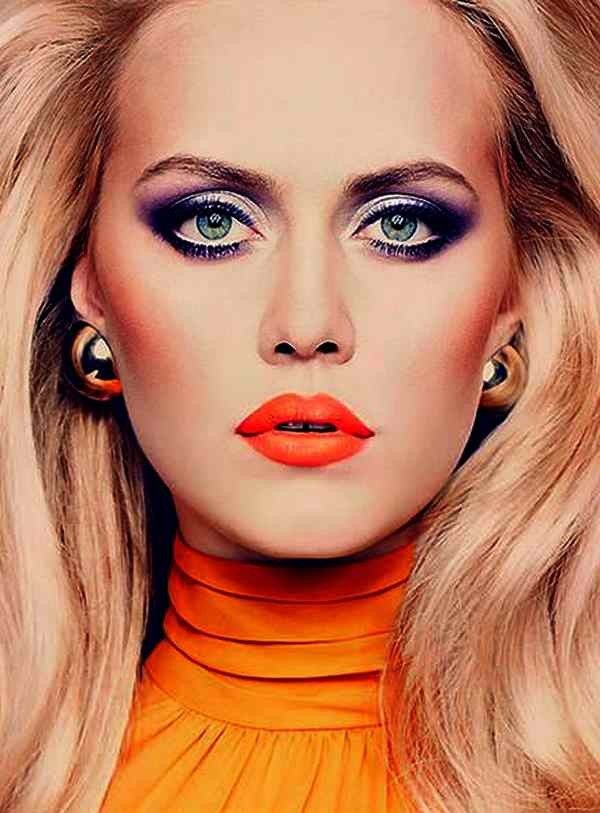
Eyes: Embrace earthy browns, golds, and bronzes for a soft, natural eye look. You can also add some shimmer for a sun-kissed glow.
Lips: Stick to nude or glossy peach or pink tones.
Cheeks: A light bronzer with peachy blush gives a natural, radiant finish.
These vintage styles can be adapted to modern bridal looks, giving you a timeless yet unique beauty transformation. Do you have a specific era or style in mind for the bridal look? if you do and can’t achieve it on your own – get help from a professional who will be more than happy to chime in.
Accessorizing the vintage bride: How to incorporate heirloom jewelry, gloves, and classic veils into your ensemble.
Incorporating heirloom jewelry, gloves, and classic veils into a vintage inspired bridal ensemble adds timeless charm with a personal touch to your look. Look at how you can elegantly accessorize a vintage bride below:
Heirloom Jewelry
Sentimental Pieces: Whether it’s a family necklace, bracelet, or brooch, heirloom jewelry carries sentimental value and history. These pieces often bring a personal narrative to your wedding day and can be mixed with modern accessories for a unique vintage inspired look. Take a look at some of these heirloom pieces I found today, just stunning.
How to wear it: Use a brooch to accent your veil, bouquet or wrap, or wear a passed-down necklace and earrings set for a delicate touch of tradition.
Layering Vintage with Modern: Don’t be afraid to mix vintage heirloom pieces with modern fine jewelry. For instance, you could stack a vintage engagement ring with a contemporary wedding band to create a fresh, layered effect. But remember to make it subtle or it could look out of place and spoil the whole aesthetic of your look.
Brooches on Gowns or Bouquets: Add a vintage brooch to the waist of your gown or attach it to the ribbon of your bouquet for a stylish, unexpected detail. Affordable vintage style brooches including Art Deco can be seen here – find the most suitable for your wedding ensemble today – shop now.
Gloves
Classic Elegance: Gloves instantly add a refined, olde-worlde feel. Depending on the era you’re channeling – you can opt for short wrist-length gloves for a 1950’s or 60’s vibe, or go for longer, opera-length gloves for a more dramatic, formal look. These gloves will certainly turn heads and give the WOW factor to any dress attire.
Fabric Choices: Satin or lace gloves are ideal for a formal, classic bride, while cotton or crochet styles fit more rustic or bohemian vintage themes. Formal gloves in many varieties are bought here – find the one for you.
Practicality: Consider whether you’ll want to wear gloves for the entire day. Many brides opt to remove them during the reception – so you may want to choose gloves that are easy to take off without too much fuss.
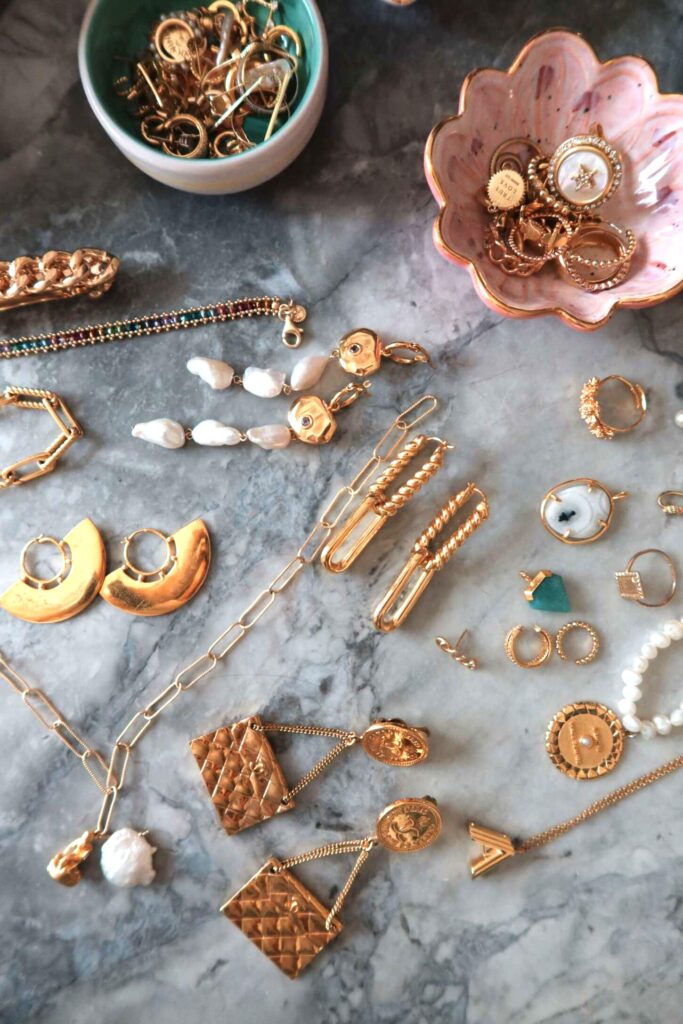
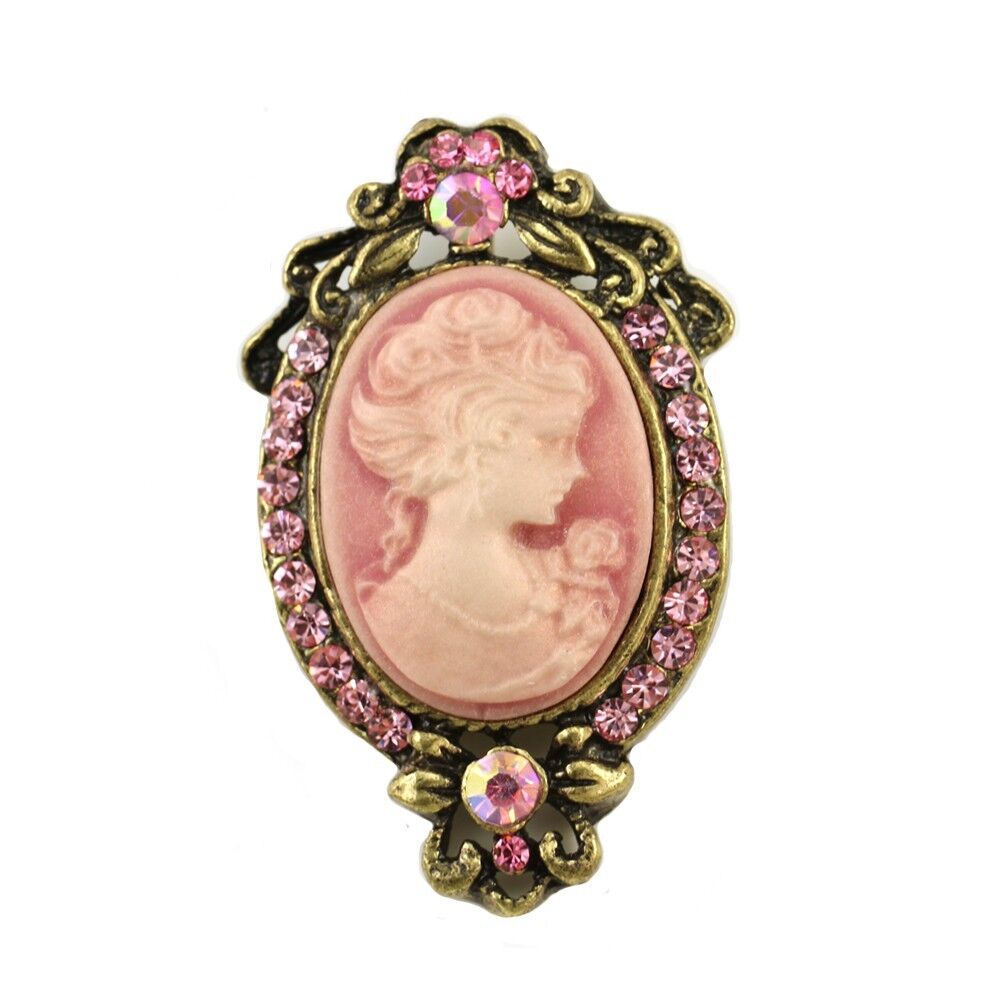
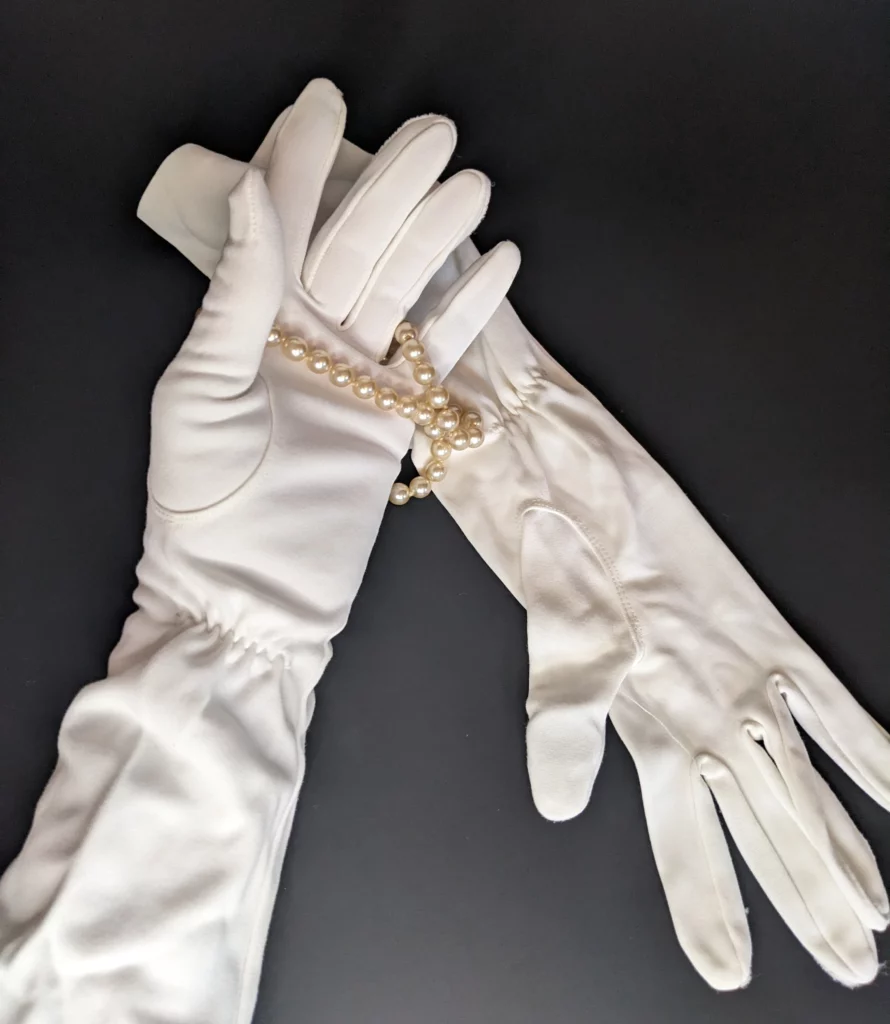
Classic Veils
Birdcage Veil: This short, netted veil covers part of the face and gives a 1940’s or 50’s vintage aesthetic. It’s ideal for brides who want to maintain a subtle, classic look while still showcasing their hairstyle. This veil is not only class but timeless, have a look at these.
Cathedral Veil: For a more dramatic entrance, the cathedral-length veil creates a sweeping, royal feel and works beautifully with vintage-inspired ballgowns or fitted lace dresses. Other cathedral veils are located at Amazon, think different styles.
Lace Edges or Embroidery: Look for veils with lace trim or delicate embroidery – echoing the style of bygone eras like the Victorian or Edwardian times. Pairing a lace veil with a simple gown will allow the intricate details of the veil shine. Stunning lace edge veils found here – buy yours today.
Blusher Veil: For a retro touch, consider a blusher veil that covers your face as you walk down the aisle, serving as a reminder to the romantic traditions of earlier times. Another veil alternative and located here for your convenience – learn more today.
Hair Accessories
Vintage Comb or Hairpin: Secure your veil with a vintage hair comb or pin to keep the theme consistent. Consider rhinestones or pearls for a touch of old-Hollywood glamour. A beautiful alternative to a veil and just the right accessory without overdoing your look, give them something to talk about here.
Tiara or Headband: For a 1920’s or 30’s look, a beaded or jewel-encrusted headband can add a touch of classic Gatsby flair to your ensemble. Assorted headbands are found at Amazon, find yours today.
Shoes
Vintage-Inspired Heels: Look for T-strap or Mary-Jane style shoes in satin or lace – that evoke an old-fashioned feel. Shoes with low heels such as Cuban or Kitten, or that have intricate detailing -will beautifully complement your vintage theme without overpowering your outfit. Mary Jane’s are hugely popular, find your exact style here – shop now. Some kitten heel varieties are also located through Amazon.
Silk or Lace Handkerchiefs
Personal Touch: These can typically be an heirloom accessory that is carried by the bride or sewn into the inside of the gown as a “something old.” Consider handkerchiefs with lace edging or embroidery, which were often traditional gifts passed down through generations. Buy your antique accessory here from this selection today.
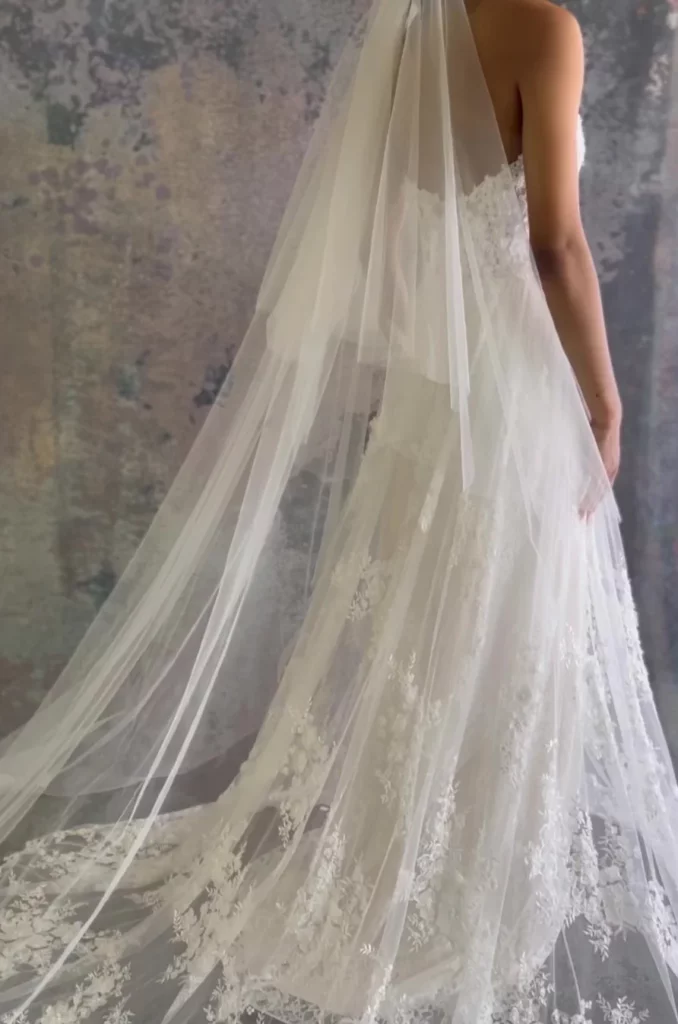
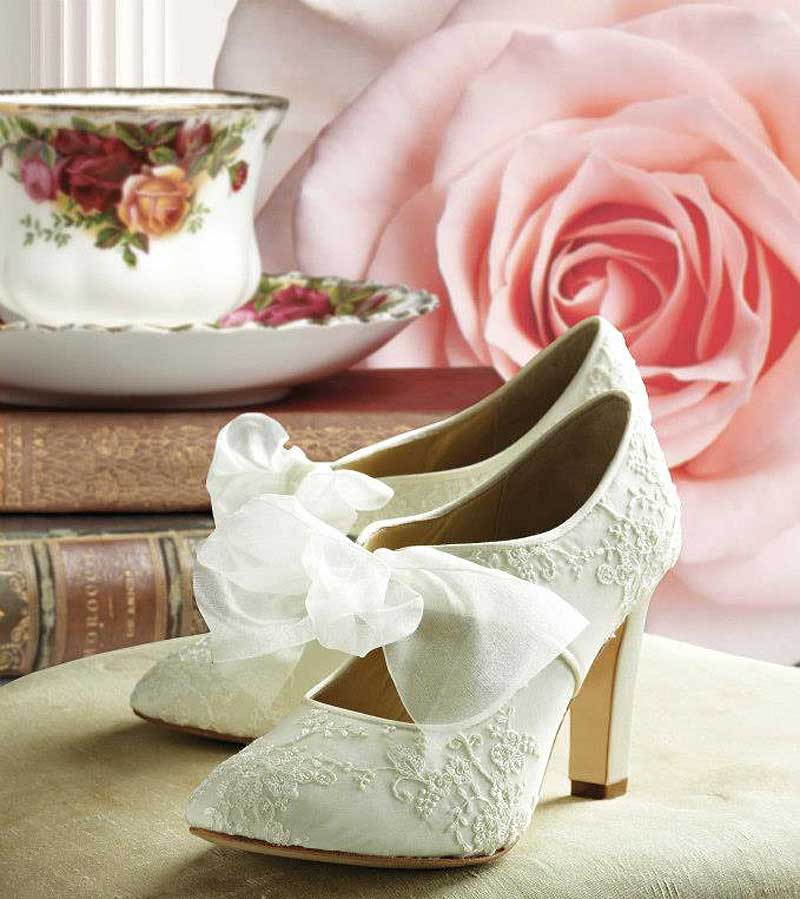
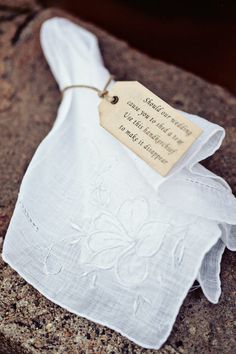
Incorporating these elements will create a harmonious, vintage-inspired bridal look that is not only stylish but also rich with meaning and tradition. Each accessory tells a story, enhancing your bridal ensemble with history and elegance.
Having been betrothed 4 times – my friends have referred to me as a “serial wedder”, but honestly there are still aspects of a vintage bride which I did not know about – even though my last 2 weddings were vintage inspired. I do hope you have picked up some tips from this post in preparation for your vintage inspired wedding, and may it be everything you had hoped for and more.
Kindest, Helen.
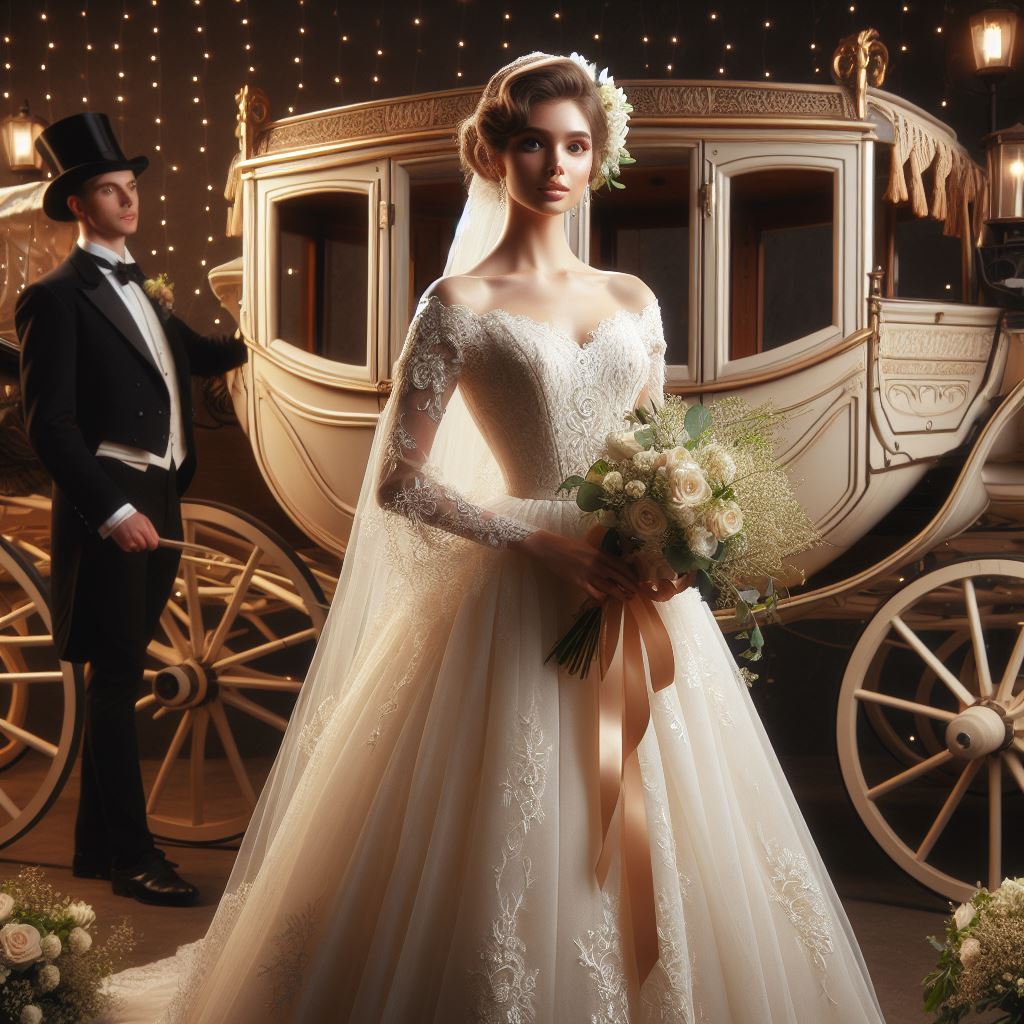
Connect via our socials or leave a comment below: